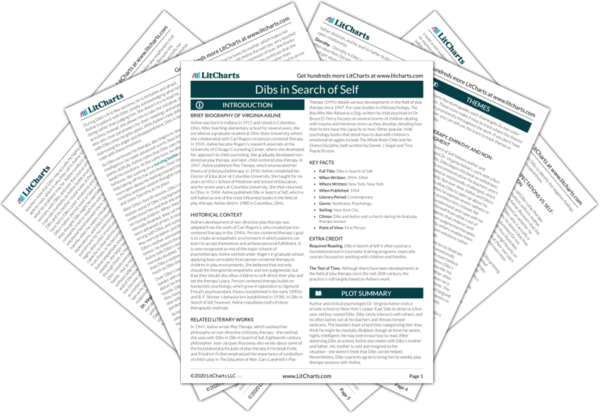LitCharts assigns a color and icon to each theme in Dibs in Search of Self, which you can use to track the themes throughout the work.
Therapy, Empathy, and Non-Judgment
Parental Expectations vs. Self-Determination
Intelligence vs. Emotional and Social Skills
